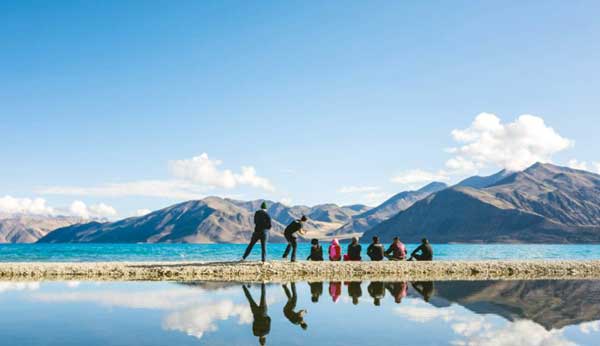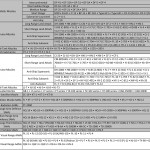
“Trained to fight the enemy but now the fight is with elements of nature”
Though the Indian Army has been defending the frontiers of the entire Ladakh region assiduously for the last 70 years, however this year it faces a unique challenge. Never in the history of Indo- China border dispute did the Indian Army have such a large deployment of troops in Eastern Ladakh. The stand-off with an aggressive and belligerent China has been continuing without any signs of ‘pull back’ for the last seven months. This ‘No War No Peace’ scenario is unprecedented on the Line of Actual Control (LAC) with Chinese PLA. In fact, de-facto the LAC has turned into a Line of Control (LC) in the sector quite similar to what we have with Pakistan all along the mountainous region of J&K. With no solution in sight the Indian Army has galvanized its logistic resources at war footing. The Advance Winter Stoking has never ever been done at such a frantic pace and with such a mammoth level of stocking.
The war effort has now shifted focus from the enemy PLA to the natural elements of weather. The chances of another skirmish are now remote due to freezing temperatures and bone-chilling wind factor. Even the 1962 war had ended, when PLA withdrew on 21 November, since it was no longer possible for them to push forward or even hold on to the gains made by them in the Chushul Sector. Some of the severe challenges created by holding additional troops in the inhospitable terrain are very apparent to every military planner.
Health of Troops
Maintaining the health of troops is perhaps the most daunting task for the Army. The medical resources designed for the troops normally posted to the 14 Corps Zone are taken care of by the Army Hospital in Leh, a 200 hundred bed capacity hospital now increased to 300. The troops deployed at the forward posts may have at the best one young medical officer for one unit. Winter related cold injuries like hypothermia, chill blains, frostbites, Cerebrovascular accidents, Cortical venous thrombosis, Heart attacks, Pulmonary hypertension are so serious that many patients have to be airlifted to Chandigarh. The logistics of lifting a sick soldier from his post to the hospital in Leh and onward treatment is a nightmare. To add to the agony is the sudden ‘packing up’ of the weather not permitting any air evacuation. The loss of life due to the vagaries of the weather are heartbreaking and have a very telling effect on the state of mind of other soldiers. It is to the credit of the medical fraternity within the forces that the very best young doctors are posted to Leh and Srinagar hospitals. If the standoff persists the Army will have to make plans to improve critical care in Leh Hospital.
Clothing
The Indian Army has scaled up its requirements of extreme winter clothing. The clothing required below 12,000 feet is not much of an issue as all products are made in India and sufficient stocks are available as reserves. The real challenge is ‘special’ winter clothing for deployments beyond that altitude. Almost the entire range of clothing has to be procured from abroad at exorbitant rates. The Army has done well to get the required clothing from various agencies and as per reports over 15,000 new special clothing sets have been purchased off the shelf from foreign countries. The troops are definitely very comfortable with the new high-quality winter clothing bulk of which has come from the US.
Habitation and Heating
The habitation for the troops has been constructed at war footing and much of the work may still be in progress. Just making these special shelters to withstand extreme cold and bone-chilling winds is not sufficient, these have to be provided with heating arrangements. With no electric generation capacity in these areas, the entire load is on diesel generating sets consuming huge amounts of diesel. The good old ‘bhukahri’ too needs colossal amounts of kerosene oil. This kind of requirement of fuel for heating purposes has never ever been stocked earlier. The region doesn’t have underground storage capacity and hence most of this stock may be kept on the ‘wheels’ adding to further difficulties. For sustaining some portion of the force for temporary tasks high-quality winter tenets are required on an emergent basis.
Water Woes
The water resources have all been frozen as the rivers that provide fresh drinking water are already at freezing point. The troops need water not only for drinking but also for bathing and cooking. Carriage of water from lower altitudes on water tankers on very narrow roads is an unfathomable task for the logistic echelons. The feasibility of digging bore wells at these altitudes will have to be undertaken by military engineers, these can be also used by the local population when not needed by the army.
Equipment Repair and Maintenance
A large amount of high-tech equipment has been deployed in the region in view of the likely war breaking out with PLA during the summers. It includes the T 90 and T 72 tanks, Mechanized Infantry combat vehicle (BMP), radar systems for Air Defence and Early Warning, specialist radio equipment, Artillery guns and mortars, Surveillance equipment and a plethora of other optoelectronic devices. This kind of equipment needs temperature-controlled repair and maintenance sheds, which are almost nonexistent in this desolate region. Such facilities too require power supply through generating sets, which adds to the requirement of fuel. To add to the logistic challenge is the requirement of specialist lubricants for such a variety of equipment. Many of these are imported and need lead time for procurement agencies. Additional major assemblies to include engines may have to be placed well forward to be used whenever needed.
Road Infrastructure
The supply chain is very complicated and to add to their problems is poor road infrastructure in the region. The Chushul-Pangong Tso sector is serviced by one road coming from Leh across the formidable Changla Pass. Due to heavy snowfall, the pass often becomes unfit for the movement of vehicles. The narrow road can be blocked for hours with only one truck getting stuck or a vehicle meeting with an accident. At best the road is fair weather even in the summer season. The task of moving thousands of tons of supplies and troops on this single road must have been a major management challenge. The alternate access Kairi-Nyoma which is much longer in distance cannot take sustained traffic. There also exists an alternate route which is a bit longer across the ‘Warila Pass’ that needs to be kept open in winters. This may need special effort by Border Roads.
COVID Pandemic
The COVID-19 pandemic could not have come at a worse time for the forces already stretched due to the almost war-like situation with China. The covid positive cases among the forces in the region have been under control but it did cause concern to the military leadership. The COVID protocols have added to the overall logistic burden on the system already stretched to its seams due to induction of additional troops in May 20. The transit camps at Chandigarh and Delhi which are ‘holding’ places for induction to the sector are overloaded. Many times troops have to be told to stay at home and not join back on duty due to lack of billeting spaces. The compulsory quarantine at various camps extending from 14 to 21 days has further added to the uncertainty and ‘state of nothingness’ for the troops.
Fire Hazard
With so much of the fuel required to be used for almost everything from cooking to living billets, the chances of fire increase manifold. The good old bukhari is one kind of jugaad and often responsible for several fire accidents in winter months. This is thus a big challenge for the junior leadership to ensure zero fire accidents. The loss of equipment and life due to fire is thus taken very seriously by the army leadership at all levels.
Parting Shot
The challenges of the winter months are real and almost overburdening. From the health of human resource to the upkeep of costly high-tech equipment is an everyday challenge. The best part, however, is the ‘never say die’ attitude of the Indian army soldier and junior leadership. The sheer resilience in face of such odds makes the steel core of the soldiering in the Indian Army. Their grit and determination against heavy odds and still keep high morale in face of adversity makes the Indian Army one of the best fighting forces of the world.
Courtesy: https://www.claws.in/ladakh-challenges-posed-by-the-harsh-and-unforgiving-winter/





After having a couple of tenures in the region, I can conclude that improving and construction of high-capacity roads would be the greatest game-changer in the theater. This singular factor would enable supply, stocking and delivery of materiel to the forward most troops in all weather conditions, which subsequently would immensely enhance the war-fighting capabilities of all arms and services. Though, making available the war-materiel is the responsibility of the nation, but taking them to the troops, remains the primary job of military administration.
In the absence of adequate road communications, all the capabilities of high-tech war-machines available, would remain limited and even restricted.
In the 21st Century war conditions, it is not the matter of making available the size of troops on the borders, but this largely depends upon dispersion, concentration and movement of the materiel that are needed to destroy the enemy.
Though the belligerent forces claim of concentrating large number of troops and materiel at the points of dispute, it becomes meaningless in the present modern landscape of war. The superior air domination, longer reach of artillery and tactical missiles, ATGMs, etc, neutralise the concept of “concentration of force”. The crux lies in dispersion and ability to reach at the point of decision and striking deep inside the enemy lines of communication.
We may have sufficient war-fighting resources, but the importance lies in their dispersed deployment, lateral movements and ability to bring them at the point of decision, remains subservient to own line of communications, i.e., Roads!